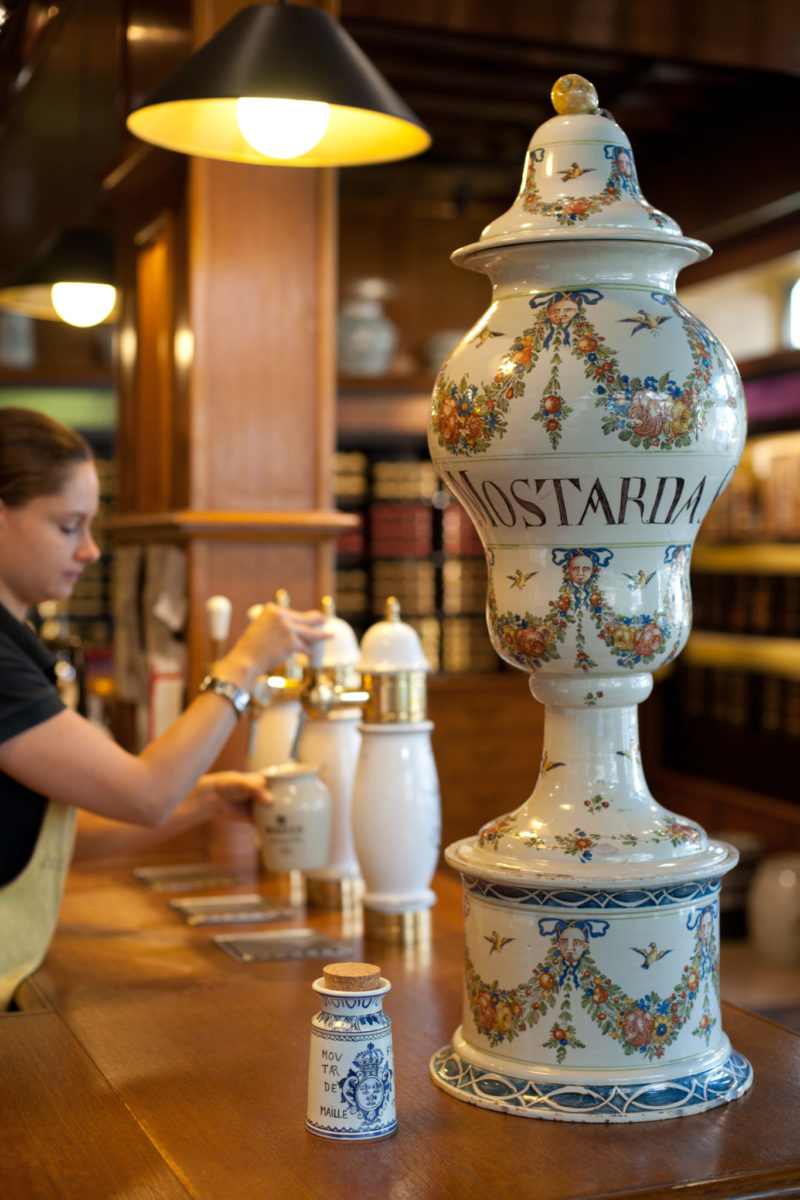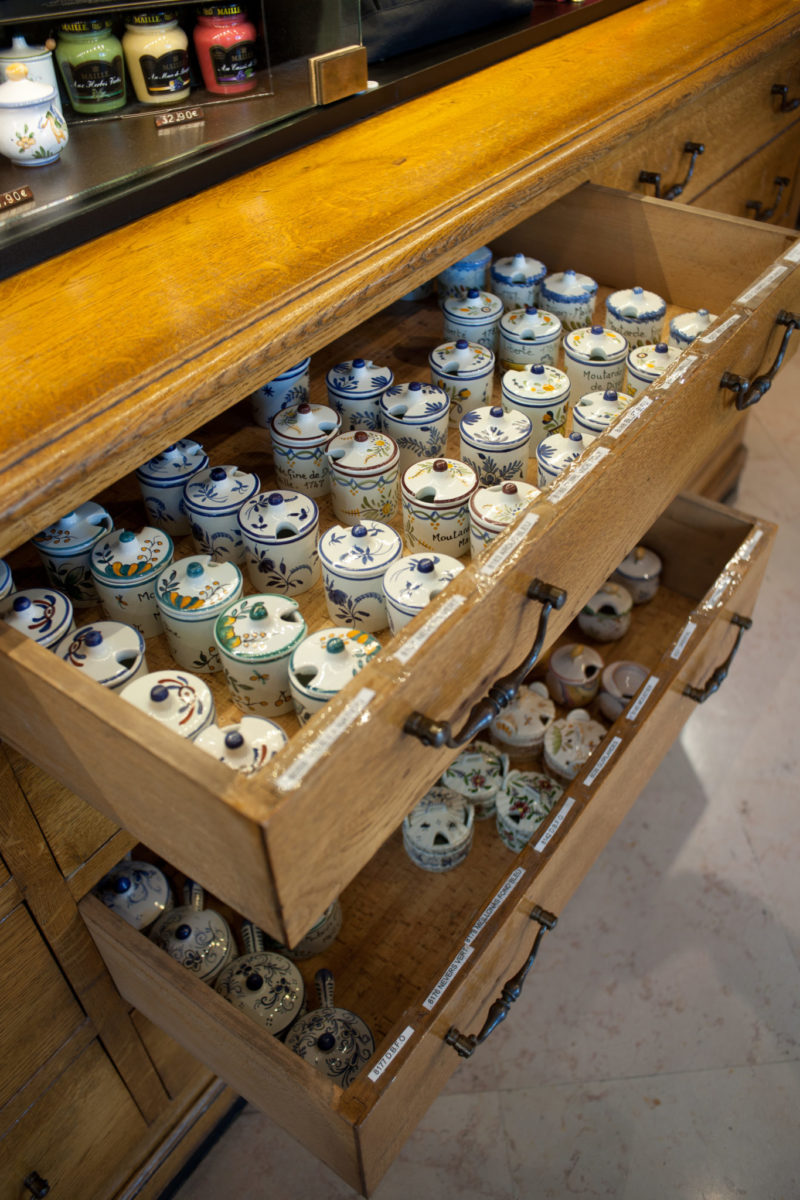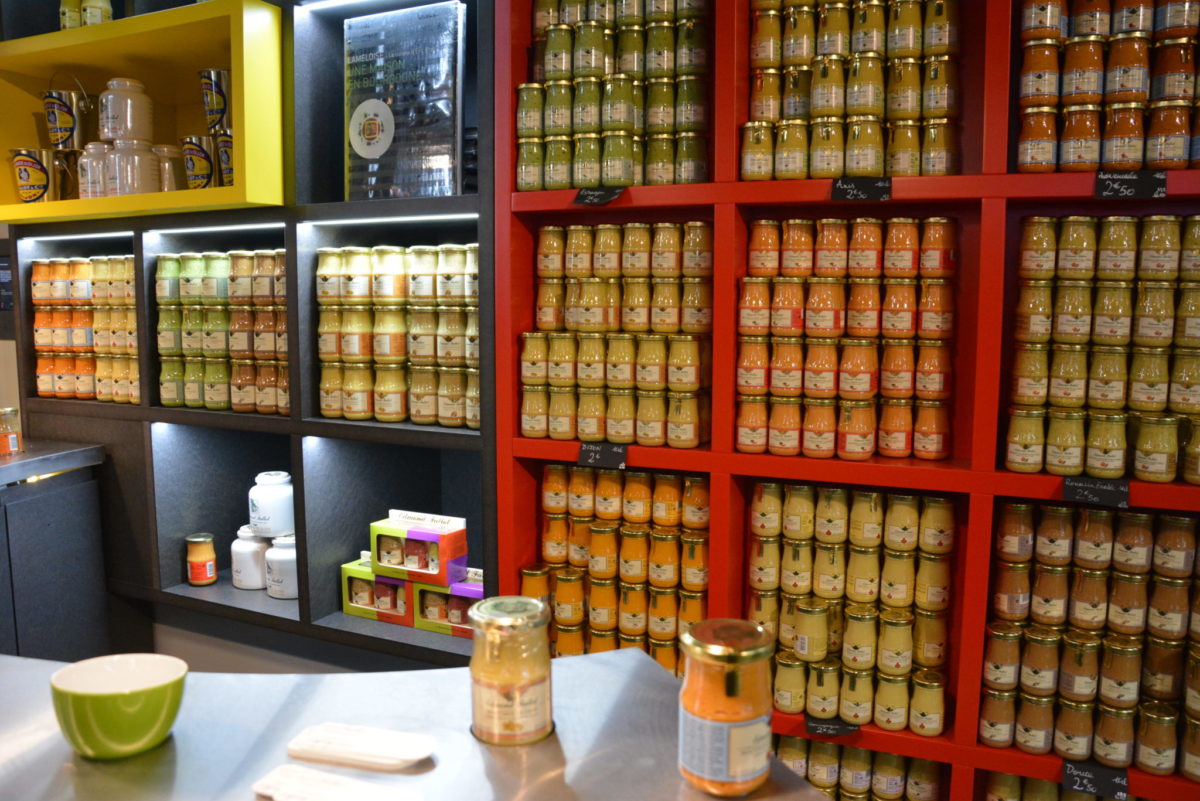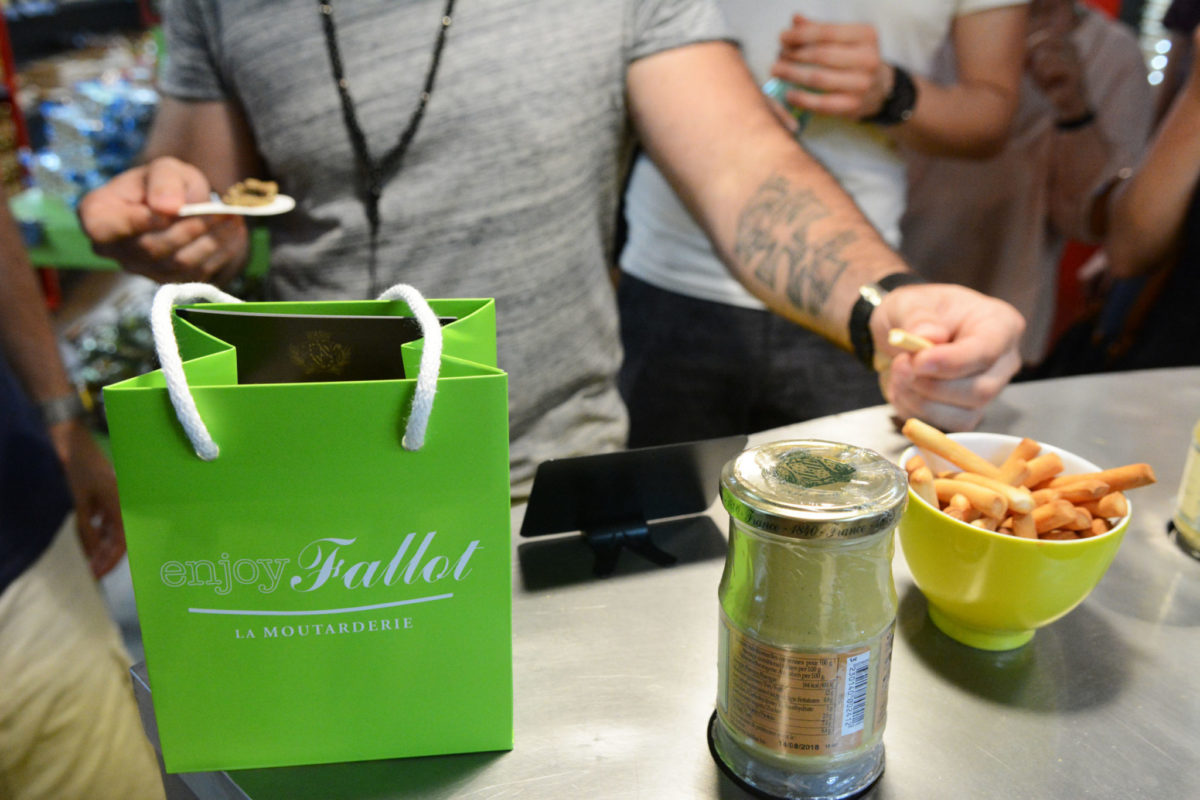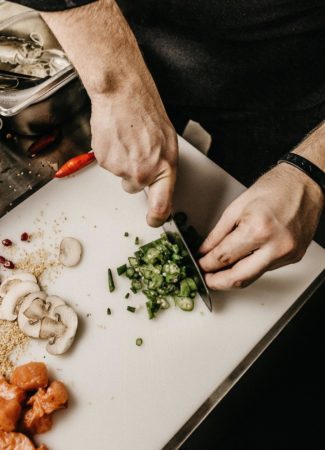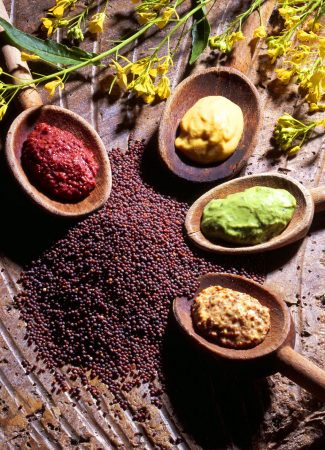Mustard is a key ingredient for cuisine with a touch of piquant. Along with the peppercorn, it is the most anciently used plant in food preparation. But do you know how this typically French aromatic condiment is made? I tried my hand at making my own. Here’s the recipe.
So what is mustard?

The term “mustard” is used for the plant that produces the grains, but also for the condiment made from the grains after they’ve been ground into powder. The Romans made mustard by mixing the crushed grains with honey and grape must. Yum!
A herbaceous plant with yellow flowers
Firstly, mustard is a herbaceous, yellow-flowered plant which looks a lot like rape. It comes in three varieties: white, black and brown.
A small grain with plenty of piquant

The mustard grain is actually very small, measuring only a millimetre in diameter. Its colour ranges from yellow ochre to reddish brown and black. They can be used whole to season meat dishes, or ground to make the famous condiment that lifts the flavour of your dishes.
How to make homemade mustard
Grind, crush, season, flavour, mix and that’s it! The Tourist Office and the Edmond FALLOT Mustard Factory propose a new kind of experience on the theme of Dijon Mustard!
In an extraordinary setting, a mustard maker will reveal all the secrets of this famous mustard and invite you to make your own.
The ingredients of mustard
To make your own mustard, you’ll need the following ingredients:
- 100 grammes of brown mustard seeds
- 8 tablespoons of dry white wine (alternatively, spring water will do)
- 6 tablespoons of white wine vinegar
- 1 teaspoon of rock salt
Preparing the mustard paste

Start by grinding the mustard seeds finely. Then use a whisk to mix the ground grains with the white wine, vinegar and salt. After a few minutes, when the mixture becomes firm, just pour it into a glass jar and place it in the fridge.
Leave the mustard to chill for a few days before using it. This will allow the aromas to disperse fully. You’ll be proud to serve your very own homemade mustard to guests!
The origins of mustard in Burgundy
Did you know that the tradition of Dijon mustard dates back to the 13th century? At the time, mustard was already present in various scriptures and popular proverbs. Nowadays, it benefits from the protected geographical indication for Burgundy mustard, “Moutarde de Bourgogne”.
“Moult me tarde”, the motto of the Burgundy dukes

The French word for mustard, “moutarde” is said to stem from a motto used by the Burgundy dukes, “Moult me tarde” (meaning “Many await me”). The expression was first pronounced by Philip the Hardy who shouted it out when a thousand people of Dijon came to fight at his side to defend Burgundy in 1381. The mustard makers then paid tribute to him by adding the motto to their mustard pots.
Dijon mustard makers
From 1390, mustard manufacturing in Dijon became subject to regulations. Two centuries later, in 1634, vinegar and mustard manufacturers joined forces to obtain exclusive manufacturing rights and the obligation for mustard pots to be identified with the manufacturer’s name.
In 1870, there were approximately forty mustard manufacturers in the city of Dijon. Today only four still remain in the gastronomy capital. If your homemade mustard doesn’t meet your expectations, you can always purchase a jar of delicious traditional mustard at one of the lovely grocery shops in Dijon town centre!





